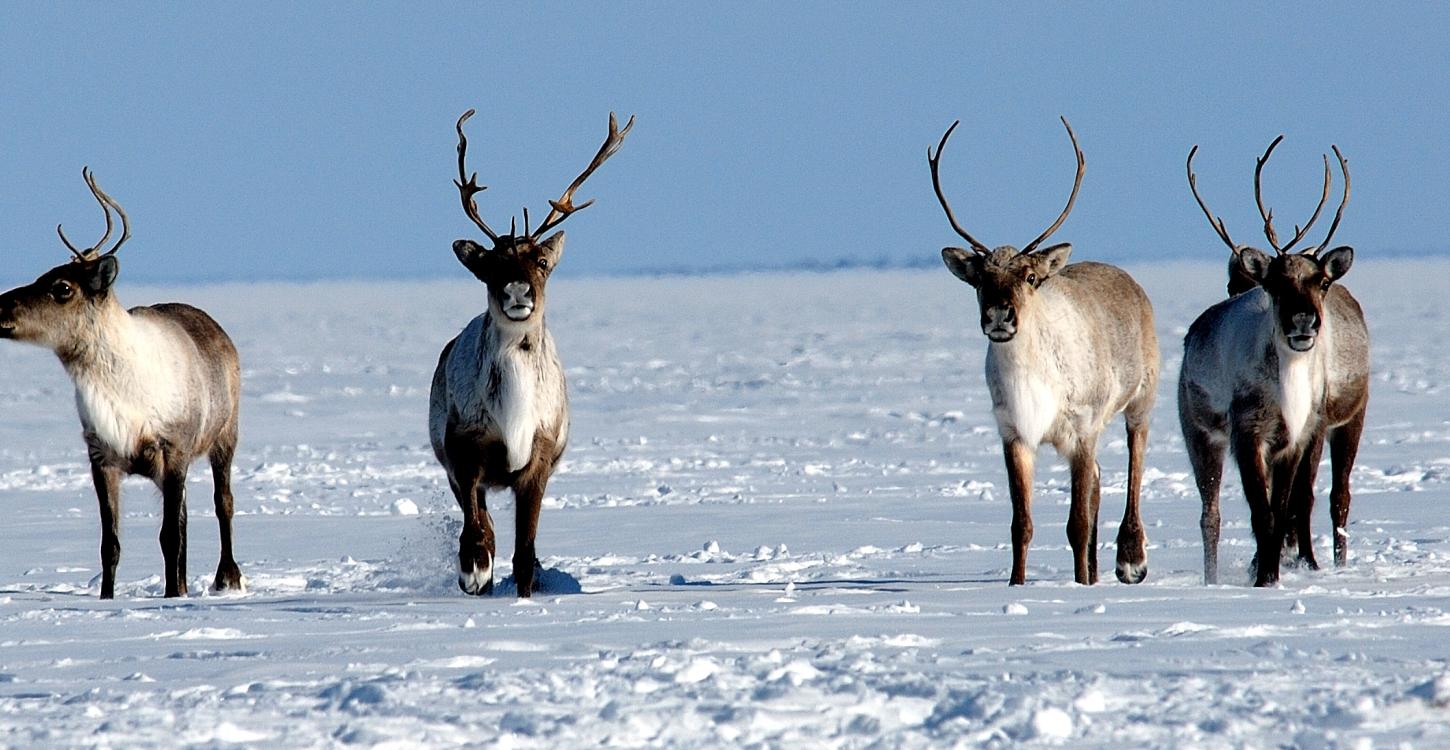
Photo credit: John Nagy, ENR. The Sahtì Ekwǫ̀ (Bluenose-East caribou) herd was reassessed this spring to a red-yellow status by the Advisory Committee for Cooperation on Wildlife Management. The Wek'èezhìı Renewable Resources Board is cautioning that it may be too premature to loosen restrictions on a herd that had a red low-level status though numbers appear to be increasing.
WRRB maintains precaution on stabilizing Sahtì Ekwǫ̀ (Bluenose-East caribou) herd
July 13, 2022
A compromise was reached on the status of the Sahtì Ekwǫ̀ (Bluenose-East caribou) herd this spring after months of deliberation between member boards.
During the Advisory Committee for Cooperation on Wildlife Management (ACCWM)’s annual meeting last November, based on community and scientific information, Member Boards proposed to reassess the herd with a yellow status, or intermediate and improved status, to represent its growing numbers.
Previously, the herd was determined by the committee to be at a red or low population status.
However, the Wek'èezhìı Renewable Resources Board (WRRB) took a precautionary stance that an improved status may be too premature and that the herd should remain red.
“It appears based on the latest scientific information that the herd may be stable but most everybody (on the WRRB board) wanted to use the precautionary principle,” explained Jody Pellissey, WRRB executive director. “We push that (precautionary principle) very much because a similar situation happened in 2015 with the Bathurst herd where it appeared that numbers leveled out and then there was a significant decrease again in 2018.”
The ACCWM is the only organization in the NWT that exists solely of wildlife co-management boards, and which has no government members.
The unique body provides status decisions and advice and recommendations through action plans to help guide the Northwest Territories, Nunavut, and Tłı̨chǫ governments on management of the Cape Bathurst, Bluenose-West, and Bluenose East.
The ACCWM reached quick agreement to retain the orange or decreasing population status for the Bluenose West while the Cape Bathurst herd remained at yellow, or intermediate and increasing indicator.
The WRRB is among six member boards that make up the ACCWM and which meets annually in November to review community and scientific information about the three northern herds. The Sahtì Ekwǫ̀ (Bluenose-East caribou) herd was reassessed this spring to a red-yellow status by the Advisory Committee for Cooperation on Wildlife Management.
The yearly meetings, as required under the 2014 Taking Care of Caribou Management Plan ,allows for a determination of colour status for each of the herds.
Pellissey said that, as the ACCWM makes decision by consensus, Member Boards took their time to consider all of the available community and scientific information before deciding on a red-yellow status for the Sahtì Ekwǫ̀.. An action plan was distributed to the GNWT, GN, and TG in late April 2022.
The action plans for the Bluenose-West and Cape Bathurst herds were completed and submitted in March 2022.
The red-yellow status represents an improvement from the lowest red status from last year. Harvesters are asked to report all harvests, use cards or tags where applicable, limit kills to bulls only, and provide body condition samples. Additionally, hunters should be aware of the areas they can harvest.
The other members include chairs from the Wildlife Management Advisory Council (NWT), Gwich’in Renewable Resources Board, Ɂehdzo Got’ın̨ ę Gots’ę̨́Nákedı (Sahtú Renewable Resources Board), Kitikmeot Regional Wildlife Board, and Tuktut Nogait National Park Management Board. To learn more about the Advisory Committee for Cooperation on Wildlife Management, please visit the ACCWM website.
Colour determination status
Green – population is high
Yellow – population is intermediate and increasing
Orange – population is decreasing
Red – population is low
Source: Determining herd status - ACCWM website